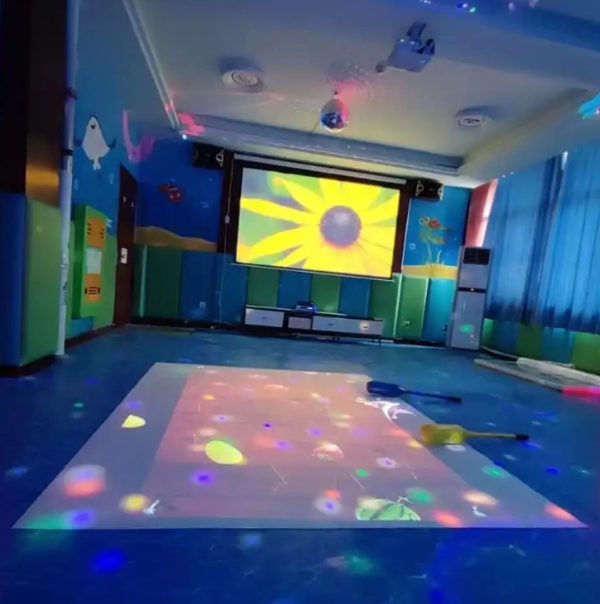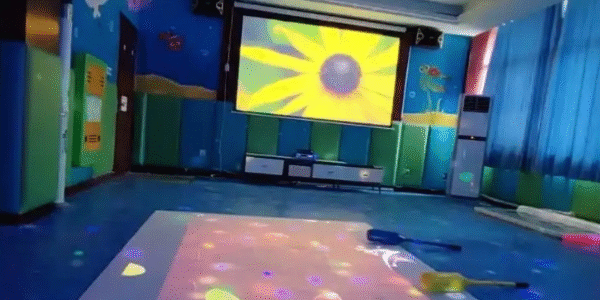Introduction: One System, Endless Possibilities for Rehabilitation
Modern rehabilitation demands flexibility, personalization, and efficiency. With patients presenting a wide range of physical, cognitive, and mobility needs, rehabilitation spaces can no longer rely on rigid one-size-fits-all approaches.
Fortunately, LiDAR interactive projection systems are rising to the challenge. These advanced solutions allow for real-time switching between different rehabilitation scenarios, offering targeted support across various therapeutic settings—from hospitals and senior care centers to community clinics.

Flexible Scenario Switching with Smart LiDAR Projection
Real-Time Projection Configuration
At the core of this adaptability is the system’s ability to dynamically retrieve and apply projection configuration parameters. These systems:
- Automatically adjust brightness, scale, and alignment of the projected content
- Switch between different training modes or therapy types with minimal delay
- Respond to pre-programmed settings or therapist input in real time
This enables seamless transitions between scenarios such as limb rehabilitation, cognitive training, and balance exercises, ensuring the right environment for every patient.
Scenario-Specific Interactive Content
The integration of LiDAR motion tracking further enhances personalization. Depending on the rehabilitation patient’s needs, the system can project:
- Instructional videos for limb movement rehabilitation
- Interactive cognitive games for neurological therapy
- Real-time balance feedback for fall-prevention exercises
Therapists or system administrators can select from a library of therapy modules, each with custom visual content, goals, and difficulty levels, all mapped to real-time body movement.
Supporting Multi-User and Multi-Scene Rehabilitation
Advanced LiDAR projection systems are not just flexible—they’re scalable. Some key capabilities include:
Multi-User Recognition
The system can track multiple rehabilitation patients simultaneously, assigning different visual tasks or programs to each user. This is especially valuable in settings like:
- Group therapy sessions
- Pediatric or geriatric wards
- High-volume outpatient rehabilitation centers
Each patient’s movement is independently captured and analyzed, ensuring individualized training and feedback without interference.
Adaptive Content Distribution
Depending on the identified user or therapy type, the system can distribute appropriate content automatically, ensuring the correct projection experience even in shared or rotating-use spaces.
For example:
- Patient A may be guided through a mobility task
- Patient B may simultaneously engage in a cognitive response activity
All managed by the same projection hardware and LiDAR infrastructure.
Application Scenarios Across Rehabilitation Settings
Thanks to their adaptability, these systems are widely applicable across:
- Hospitals: for pre- and post-operative physical therapy
- Community rehabilitation centers: for accessible, contactless training
- Elderly care facilities: for balance, coordination, and cognitive stimulation
- Special needs or pediatric facilities: for gamified engagement and motor skill development
The ability to customize and switch between rehabilitation types without altering hardware makes these systems highly practical and cost-effective.
Benefits of Scenario Switching in Rehabilitation
- Increased training efficiency: Less time wasted reconfiguring physical spaces
- Greater personalization: Each rehabilitation patient receives a program suited to their unique needs
- Higher therapist productivity: One system can serve multiple purposes and users simultaneously
- Consistent data tracking: Regardless of the scenario, data is captured and logged for future review
- Enhanced patient experience: Engaging visuals and targeted tasks improve satisfaction and motivation
Conclusion: Smarter Systems for Smarter Recovery
LiDAR-based interactive projection systems are transforming how rehabilitation is delivered. By supporting seamless scenario switching, personalized content, and multi-user environments, these systems enable smarter, more inclusive recovery paths for patients of all backgrounds.
As the healthcare sector increasingly seeks scalable and adaptive technologies, interactive projection powered by LiDAR stands out as a key enabler of next-generation rehabilitation.
CPJROBOT specializes in the development and manufacturing of POE interactive LiDAR and industrial radar solutions. We provide customized radar-based interaction systems for rehabilitation, motion tracking, and immersive training environments.
Interested in upgrading your rehabilitation facility with intelligent, multi-scenario projection solutions?
Contact CPJROBOT today to explore how our LiDAR technologies can power your next-generation therapy programs.







